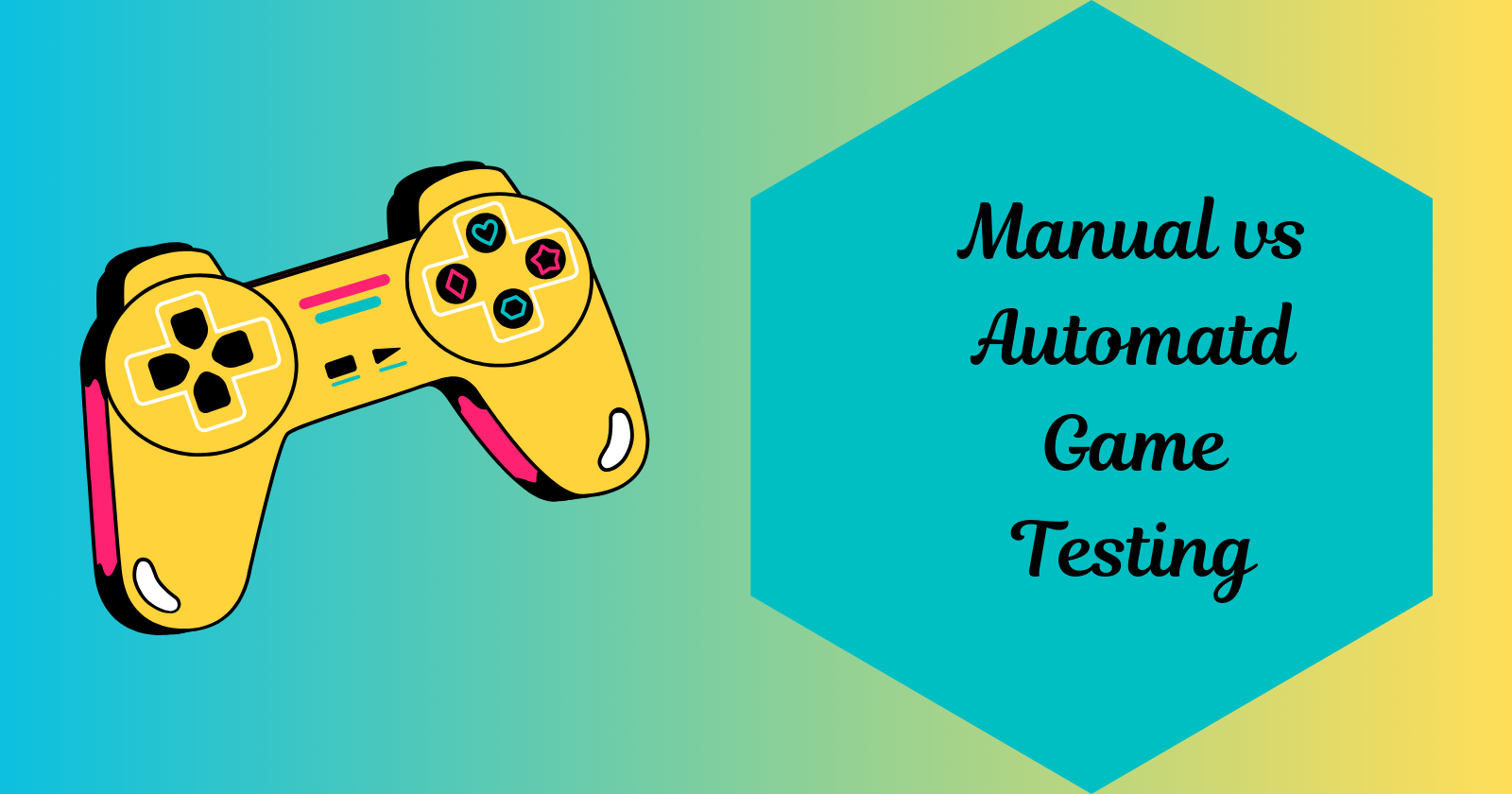Which One Should You Select – Automated or Manual Game Testing?
 Abhay
Abhay
As the gaming industry grows, the importance of delivering high-quality games has never been greater. Game testing ensures your game performs well, offering seamless performance across various platforms. Whether you’re working on a mobile game, a console game, or a PC title, testing is an essential phase in the development process. However, developers often face a critical decision regarding game testing: should they rely on automated, manual game testing, or a combination of both? Understanding this can help you make an informed choice for your game.
Understanding Automated Game Testing
Automated game testing involves using software tools and scripts to run tests on your game. This method is particularly useful for repetitive tasks that must be executed multiple times across different scenarios, platforms, and devices. Automated testing is known for its speed and efficiency, making it an ideal choice for regression, performance, and stress testing.
An advantage of automated testing is its ability to run tests 24/7 without human intervention. This ensures that the game is constantly monitored for bugs and performance issues, enabling quicker identification and resolution of problems. Moreover, automated tests can be reused across different game versions, saving time and resources in the long run.
However, automated testing does have its limitations. While it excels in performing repetitive tasks, it struggles with complex scenarios that require human judgment. For instance, assessing the user experience, visual glitches, and gameplay mechanics often necessitates a human touch. Additionally, setting up automated tests requires a significant upfront investment in time and resources, making it less suitable for smaller projects with tight budgets.
The Role of Manual Game Testing
Manual game testing, on the other hand, involves human testers playing the game to identify bugs, glitches, and performance issues. This approach is highly effective for assessing the overall user experience, as human testers can provide valuable insights into how the game feels and performs from a player’s perspective. Manual testing is good for exploratory testing, where testers can navigate the game unexpectedly to uncover hidden issues.
A key strength of manual testing is its flexibility. Human testers can adapt to changes in the game, test creative gameplay scenarios, and identify issues that automated tests may overlook. Manual testing is also essential for testing the game’s narrative, art, and sound, as these elements require subjective evaluation.
However, manual testing is not without its drawbacks. It is time-consuming and prone to human error, especially when dealing with repetitive tasks. Additionally, manual testing may not be as thorough as automated testing in identifying issues across all possible scenarios, leading to potential gaps in coverage.
Choosing the Right Approach for Your Game
Deciding between automated and manual game testing depends on various factors, including your game’s size and complexity, budget, and development timeline. Automated testing can provide the scale and speed for larger games with multiple platforms to ensure comprehensive coverage. On the other hand, manual testing is indispensable for evaluating the game’s creative aspects, such as user experience, visual quality, and narrative coherence.
In many cases, a hybrid approach is the best option. Automated testing can handle the repetitive and technical aspects of game testing, while manual testing can focus on areas that require human insight and creativity. This combination ensures that your game is thoroughly tested regarding technical performance and player satisfaction.
The Importance of Mobile Game Testing Tools
Ensuring Device Compatibility: One of the primary challenges in mobile game testing is device compatibility. Unlike traditional gaming platforms, with relatively standardized hardware, the mobile ecosystem is highly fragmented. There are thousands of devices on the market, each with specifications, screen resolutions, processing power, and operating system versions. Mobile game testing tools allow developers to test their games across various devices, ensuring the game performs consistently and looks great on all screens.
Without proper testing tools, developers would need to manually test their games on each device, which is time-consuming and impractical. Automated mobile game testing tools streamline this process by simulating various devices and configurations, allowing for efficient and thorough testing across multiple platforms.Enhancing Performance Testing: Performance is a critical factor in mobile gaming. Players expect smooth gameplay, fast load times, and minimal lag. Mobile game testing tools are essential for performance testing, which evaluates how well the game runs under different conditions. These tools can simulate various network conditions, such as 3G, 4G, or Wi-Fi, to ensure the game remains responsive even in less-than-ideal situations.
Moreover, performance testing tools can help identify memory leaks, frame rate drops, and other issues that could negatively impact the player experience. By detecting and resolving these problems early, developers can optimize their game to deliver a superior experience across all devices.
Testing Across Different Network Conditions: Mobile games are often played on the go, meaning they must function well in various network environments. The game must adapt and perform consistently from high-speed Wi-Fi connections to congested cellular networks. Mobile game testing tools can simulate different network conditions, allowing developers to test their game’s behavior under varying bandwidth and latency levels.
This type of testing is crucial for multiplayer games, where network stability directly impacts gameplay. Using mobile game testing tools to evaluate network performance, developers can ensure that their game offers a smooth and reliable experience regardless of the player’s connection quality.
Conclusion
Regardless of your testing approach, HeadSpin offers a comprehensive solution to streamline your game-testing process. With its robust platform, you can conduct automated and manual testing on real devices, ensuring that your game meets the highest quality and performance standards.
HeadSpin’s mobile game testing tools provide valuable insights into game performance across various network conditions and locations, helping you deliver a seamless gaming experience to your users. Whether focused on automated testing, manual game testing, or a combination of both, HeadSpin can help you achieve your game-testing goals efficiently and effectively. By leveraging the right game testing strategies and tools, you can ensure that your game meets technical standards and delivers players an engaging and enjoyable experience.
Article resource: This post was originally published here https://coruzant.com/opinion/which-one-should-you-select-automated-or-manual-game-testing/
Subscribe to my newsletter
Read articles from Abhay directly inside your inbox. Subscribe to the newsletter, and don't miss out.
Written by

Abhay
Abhay
I am a digital marketer with 13+ yrs. experience. I have written so many blogs and also have sound knowledge in software testing.